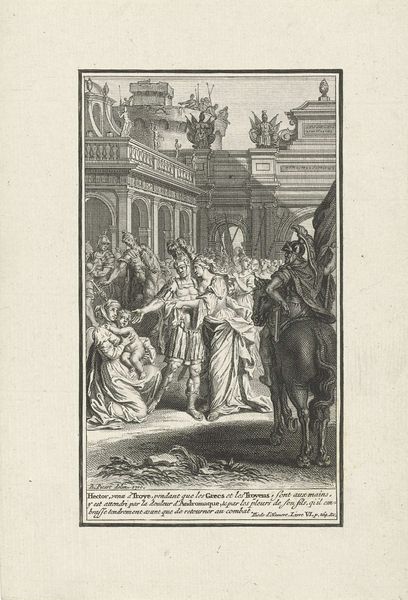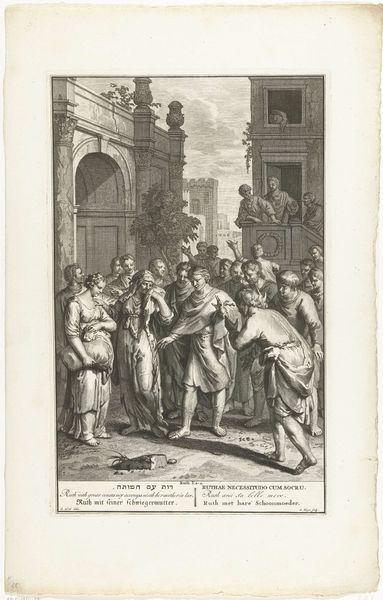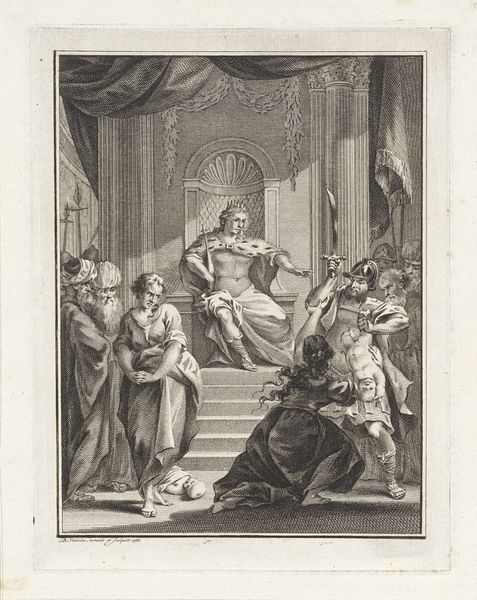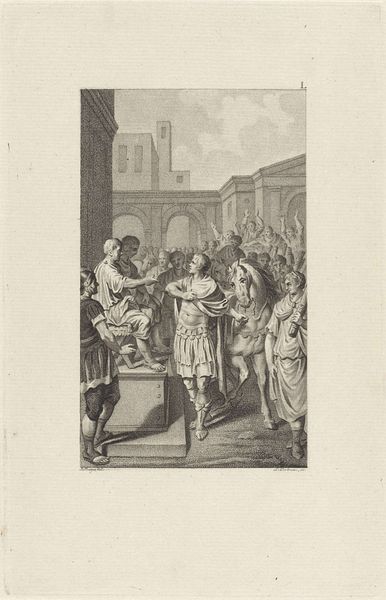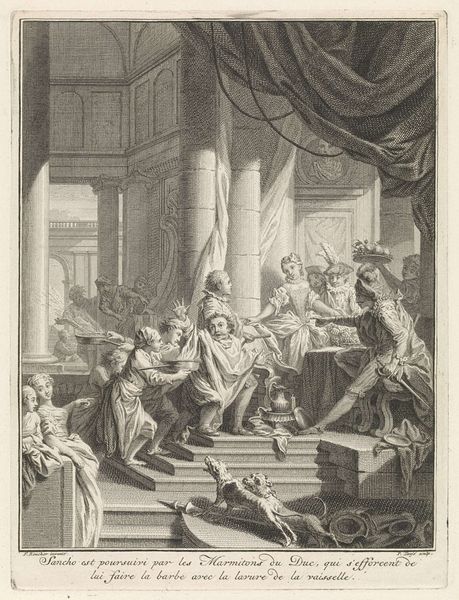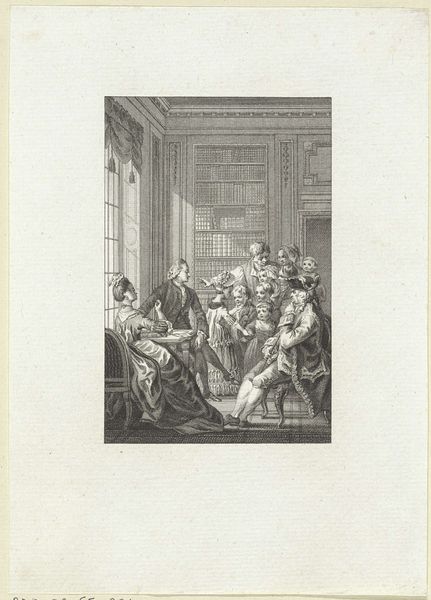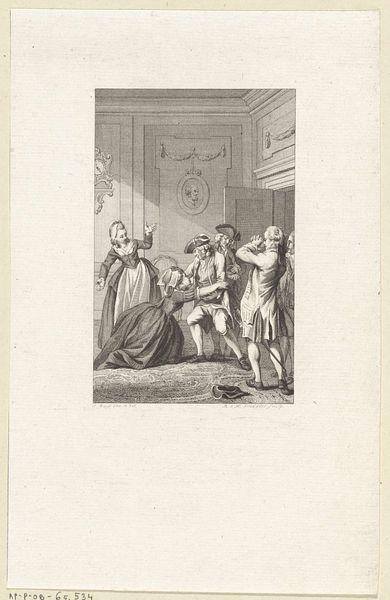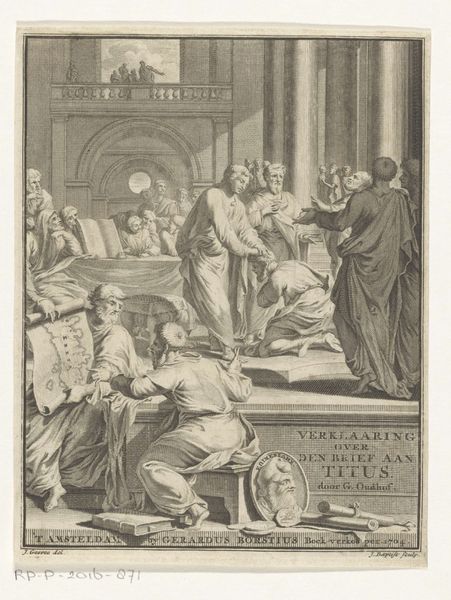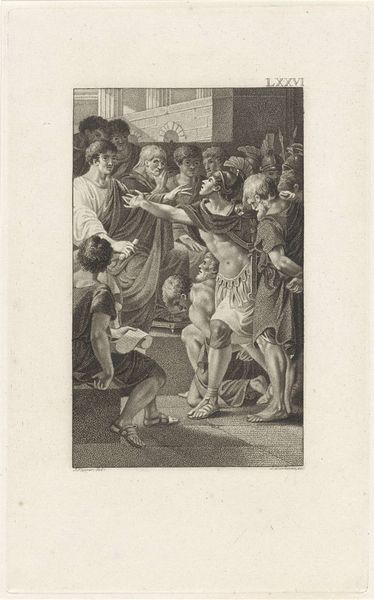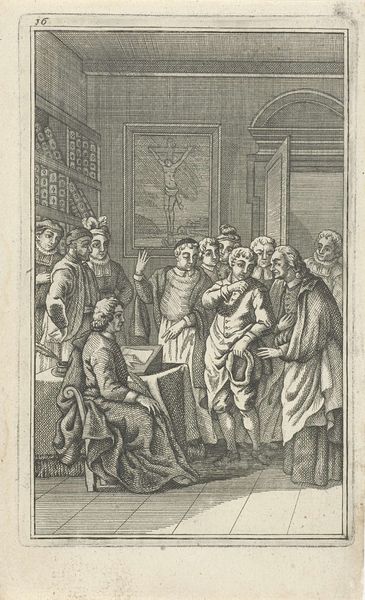
print, engraving
# print
#
old engraving style
#
landscape
#
classical-realism
#
figuration
#
line
#
genre-painting
#
history-painting
#
engraving
#
realism
Dimensions: height 162 mm, width 113 mm
Copyright: Rijks Museum: Open Domain
Editor: This is "Seianus ter dood veroordeeld" by Jan Caspar Philips, made sometime between 1736 and 1775. It's an engraving currently held at the Rijksmuseum. The scene seems very tense. What symbols or deeper meanings are visible to you in this image? Curator: Immediately, the classical architecture speaks to a desire to connect with Roman virtues – justice, law, order. Yet, notice the statue. It appears to be looking down, perhaps disapprovingly. What emotional weight does that add, knowing the title? Editor: It feels like the artist is implying that Sejanus’ condemnation might not be entirely just. Was Sejanus a controversial figure? Curator: Absolutely. He was a powerful and ambitious figure in Roman history, ultimately condemned for conspiracy against Emperor Tiberius. This engraving captures a moment of political downfall. What about the figures surrounding Sejanus, their body language? Editor: Most seem passive or saddened. There’s one woman clinging to him, distraught, but others seem to just be observing. The active figures almost seem like captors escorting him, except gently. Curator: Consider how that quiet grief contributes to the image. There’s almost a sense of inevitable tragedy rather than triumphant justice. This evokes pity, a very complex response for a scene of deserved punishment, doesn't it? What could that reflect about the cultural memory of such events? Editor: It's almost as though it’s a cautionary tale rather than a celebration of justice. So many layers within a seemingly straightforward historical scene! Curator: Exactly! It shows how even an image seemingly documenting history becomes imbued with emotional and psychological dimensions beyond the immediate narrative. Editor: That really changes how I view historical artworks now. Thanks for pointing out how many layers they have.
Comments
No comments
Be the first to comment and join the conversation on the ultimate creative platform.
